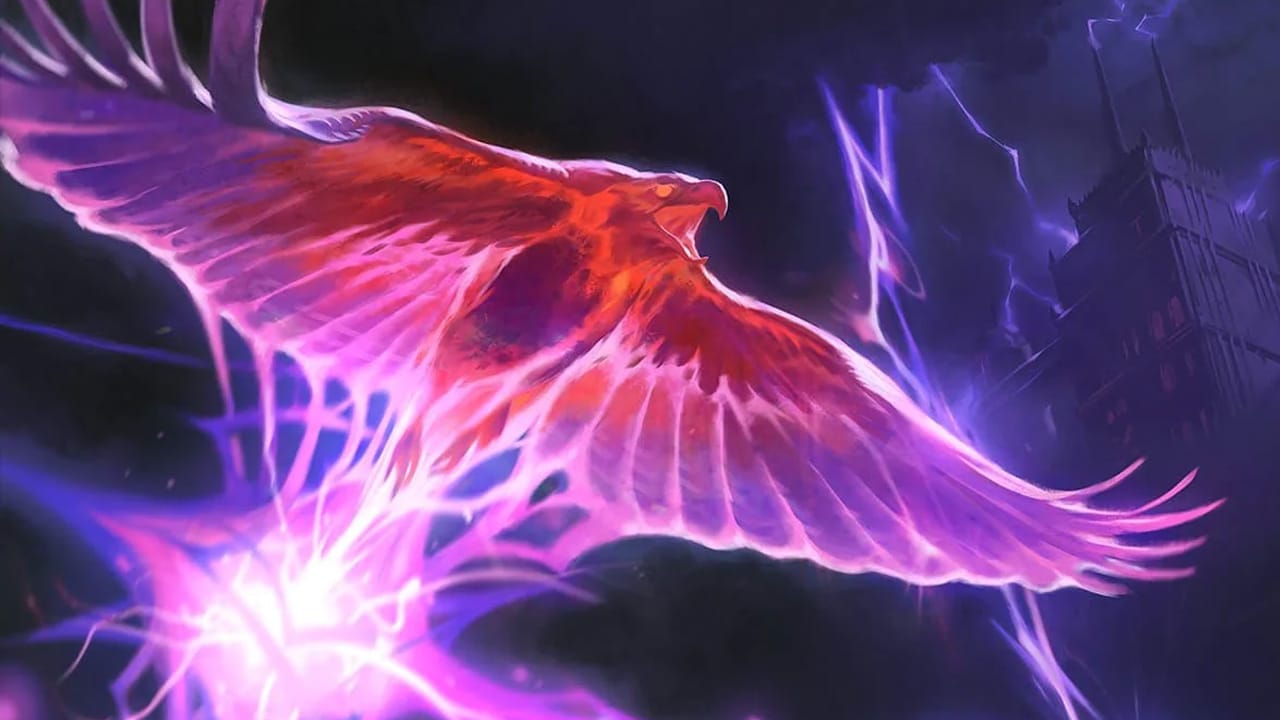The Pioneer format is in a rather positive place right now. Previously, Pioneer was plagued by overpowered cards and dominant decks, but the times have changed. Thanks to recent bans, the Pioneer metagame has been shaken up dramatically, so we’re seeing a lot more innovation and variety. This makes it a great time to get into Pioneer if you’re interested in the format.
Whether you’re looking to find the archetype that’s right for you or just scope out the competition, we’ve got you covered. Here are all the best decks in the Pioneer format right now.
Tier 3 Pioneer Decks
Pioneer has rotated out of the Regional Championship qualifiers, and is scheduled to stay out of it for the foreseeable future. As a result, serious MTG competitors have moved on to other things, and Pioneer has become more of a casual competitive format.
This means that a lot of pet decks are prevalent in Pioneer tournaments. While they may not be the best things to pick up, the right pilot can secure incredible results with them. This allows a bunch of strategically questionable strategies to put up somewhat consistent tournament results.
If you see a less popular Pioneer deck see consistent results in the hands of a few players, it is likely you’re looking at a tier 3 Pioneer deck.
Selesnya Angels

Selesnya Angels is another classic Pioneer archetype that hasn’t been viable for quite some now. Thanks to the recent bans shaking up the metagame, however, this once-beloved archetype is back in vogue. More than just popping up as a fun niche choice, Selesnya Angels is proving to be a real metagame contender.
At its core, this deck follows a unique aggro game plan that cares about gaining life. Not only does this activate Righteous Valkyrie, but it also helps stabilize against other aggro decks and Rakdos Sacrifice. This helps to make the deck rather resilient against the current Pioneer metagame.
To fuel this lifegain-based strategy, Bishop of Wings is a core piece of the puzzle. Alongside Giada, Font of Hope these cards ensure that each Angel played is that much more powerful. Notably, the deck isn’t entirely angels as a pair of mana dorks can be found in a lot of main decks too.
Llanowar Elves and Elvish Mystic both help to ramp to Collected Company and Kayla’s Reconstruction that much faster. Doing this is vital to the deck’s game plan since either card can immediately build you a robust board. Thanks to the synergy between the deck’s creatures, this usually starts a snowball that’s nigh unstoppable.
Overall, Selesnya Angels is currently very well equipped to take on the Pioneer metagame. Thanks to this, it has been performing very well at both major and minor events. Despite this winning stream, it’s currently unclear if this deck has the legs to be a real dominant force in the metagame going forward. In theory, Selesnya Angels has the chops to be a solid tier 2 deck, but this is a rather unpopular version of Collected Company decks at the moment, putting it in tier 3 for now.
5 Color Landfall

Even before it gets going, Landfall is a very compelling archetype to play. Typically drawing a land is a disheartening experience that can put you one step behind. When your entire deck is built around lands, however, there’s basically no such thing as a bad draw. Beyond this innate positive, 5 Color Landfall decks are providing to be surprisingly strong in Pioneer right now.
To start with the lands, arguably this deck’s greatest tools are the Streets of New Capenna Fetch Lands. While these are far weaker than actual Fetch Lands, they nonetheless allow you to double up on Landfall triggers. They even become a valuable source of ramp and additional triggers when playing Worldsoul’s Rage later in the game.
When it comes to getting value from lands, Lotus Cobra is a vital early card. The same is true for Nissa, Resurgent Animist since they both help with temporary ramp. Nissa also allows you to potentially find Omnath, Locus of Creation which is arguably the most iconic and powerful Landfall engine.
When played alongside Spelunking or Escape to the Wilds these creatures ensure you have all the mana you’d ever need. This, in turn, allows you to play massive game-ending threats like Atraxa, Grand Unifier or Zacama, Primal Calamity. Should you mana to drop one of these bombs, you’ll have a tough time not steamrolling opponents.
Thankfully, 5 Color Landfall isn’t just big creatures and nothing else. Leyline Binding and Ill-Timed Explosion offer potent removal when it matters. This helps to make 5 Color Landfall a rather well-rounded deck that can put up a very impressive fight.
Abzan Greasefang

Now that Rakdos Vampires and Amalia Combo have been banned, Abzan Greasefang is back in Pioneer. Built around the titular Greasefang, Obika Boss this deck revolves around cheating in huge vehicles for massive damage. Specifically, Parhelion II is the ideal vehicle that not only hits hard but builds you a board at the same time.
The only caveat to this deck’s success is that Parhelion needs to be in the graveyard first. Thankfully, this is rather easy to accomplish thanks to discard effects. Raffine’s Informant, Bitter Triumph, Grisly Salvage, and Cache Grab each offer a reliable way to put Parhelion in the bin. From here, all you need to do is play Greasefang and the ball is rolling.
While Parhelion packs the biggest punch, Esika’s Chariot is a potent option to follow up. Not only does this card give you a pair of cat tokens, but it can also copy one of Parhelion’s angles. This allows you to keep the pressure on while not attacking directly Greasefang, since they can be used to crew vehicles instead.
Thankfully, while Greasefang is somewhat susceptible to removal, this deck can bring them back in a pinch. Can’t Stay Away and Lively Dirge can help resurrect and find what you need, although these are one-off inclusions. Instead of going all in on Greasefang, Thoughtseize and Duress should help remove removal before it becomes a problem.
Overall, Abzan Greasefang is doing fairly well for itself in the current Pioneer metagame. While it may not be the best MTG deck in Pioneer, it’s putting up a respectable fight and earning good results. With a Vehicle-based MTG set arriving in early 2025, there’s a chance this deck gets a major upgrade soon.
Lotus Field Combo
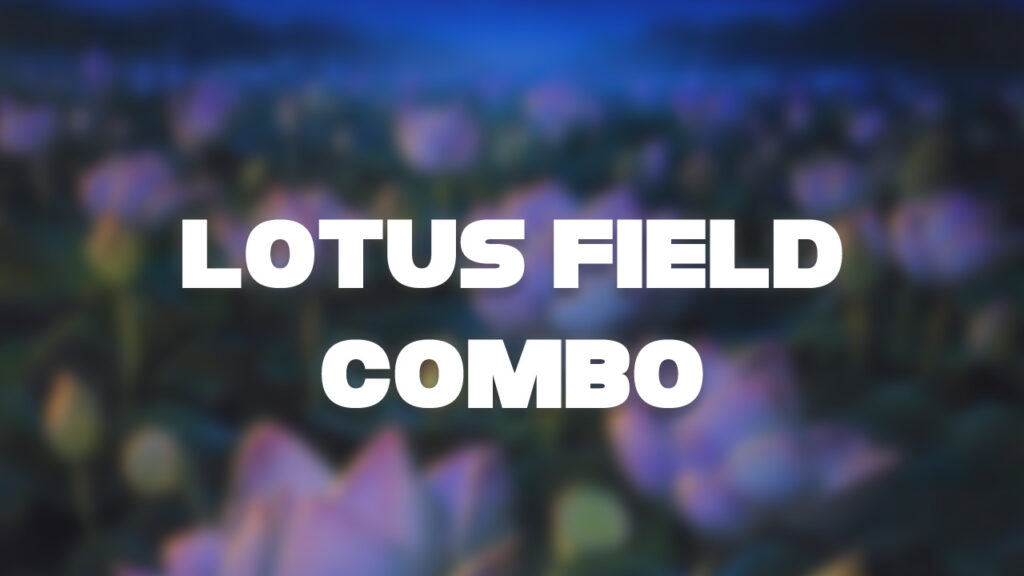
Lotus Field is a deck that revolves almost entirely around the namesake card. The goal is to get a copy of Lotus Field into play, and then copy it with Thespian’s Stage. From there, you can use a variety of untap effects to generate obscene amounts of mana and dig through your deck.
To accomplish both of these goals, Pore Over the Pages is arguably the deck’s best utility piece. Not only does this card effectively draw you two cards, but it can gain you one mana too. Alongside this core piece, Vizier of Tumbling Sands and Hidden Strings makes generating an obscene amount of mana surprisingly easy.
Once you have enough mana, you can begin digging through your deck with Impulse and Dark Petition. Ideally, these cards will find Emergent Ultimatum which can guarantee you the win. Just name Omniscience, Fae of Wishes, and Lier, Disciple of the Drowned and you’ll always get a winning card.
This highlights the green version of the deck that has overall a very strong card quality, but can lack consistency. A new Izzet variant utilizing Artist’s Talent and Wish is now the preferred way to play the deck. While this version of Lotus Field is much more consistent, it has the downside of being much more difficult to pilot.
Regardless, all iterations of this deck struggle against aggressive creature decks, and those happen to be some of the best decks in the format. Because of that, the deck is tier 3 at the moment, played only by a select few who can pilot the complicated archetype efficently.
Boros Convoke
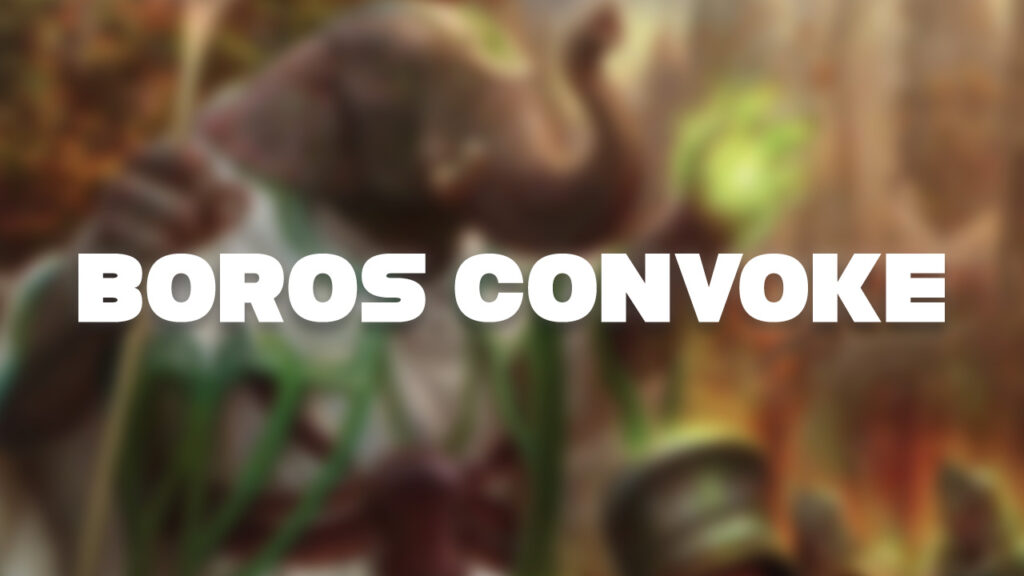
Boros Convoke is a deck capable of blazing-fast starts. By pairing either Venerated Loxodon or Knight-Errant of Eos with cards that help you go wide with tokens, such as Gleeful Demolition. You can cast one of these Convoke Creatures as early as turn one, but generally your fast starts will happen on turn two.
By going wide with creatures, you also get to maximize Reckless Bushwhacker, which is quite effective at putting your opponent on the backfoot quickly, even if you weren’t able to cast one of the Convoke Creatures.
Boros Convoke recently got a rather powerful upgrade in the form of Warden of the Inner Sky from The Lost Caverns of Ixalan. Thanks to all the artifacts and token bodies that the deck makes, it is incredibly easy to activate this card’s ability multiple times in a turn, fixing your draws and continually growing its body.
The absence of Amalia combo has allowed Boros Convoke an entry point back into the Pioneer metagame. That said, Rakdos and Jund Sacrifice are now on the rise, and could prove problematic for this archetype. For now, however, a lack of preparation for aggro decks allows Boros Convoke to profit.
Tier 2 Pioneer Decks
Following the recent bans that affected the two best Pioneer decks, the metagame has become rather volatile. Recent events have been won by a variety of different decks and brews as players explore the revitalized competitive landscape. During recent tournaments, several typically underpowered strategies have shown they’ve still got legs
While each of the following decks may firmly be in the category of Tier 2, they’re nonetheless powerful. In the right setting, and in smaller events specifically, these decks can still successfully fight for wins. If you’re looking for a cheaper or more unorthodox strategy, these decks might just be for you.
Mono-Red Aggro
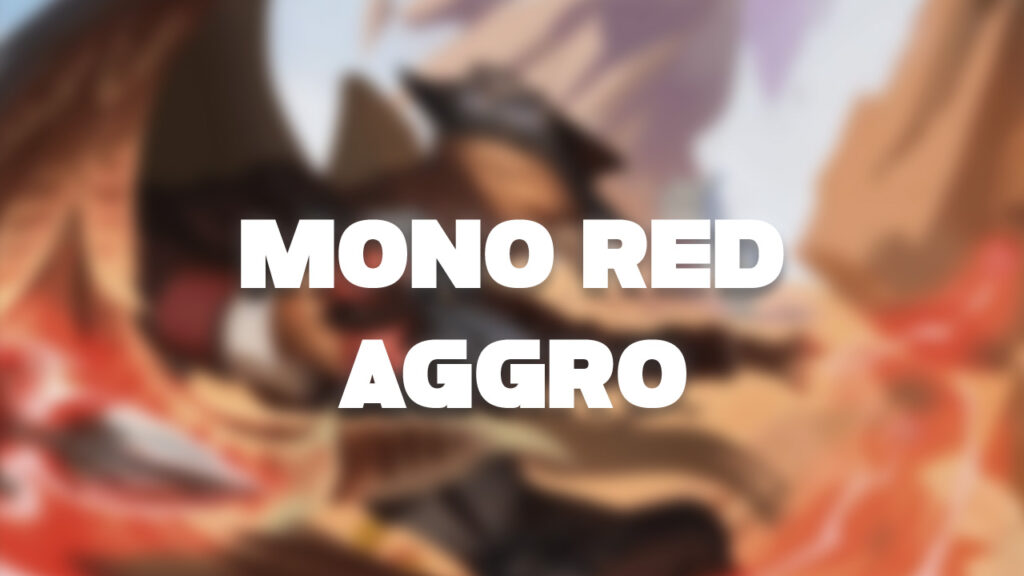
Thanks to Outlaws of Thunder Junction, Mono-Red Aggro has become a potent deck within the Pioneer metagame. Specifically, this recent rise in power has been propelled by Slickshot Show-Off and their remarkably useful Plot ability. Whether they’re in exile or swinging in for damage, this card is an absolute menace right now.
While Slickshot Show-Off initially put Mono-Red Aggro on the map, the deck is now essentially a watered-down version of the Prowess decks that are among the tier-one Pioneer decks. Mono Red exchanges some overall staying power for more consistent pressure. If your goal is to relentlessly kill your opponent, this is the best deck to do that. If you’re looking for an aggressive strategy that gives you more options, consider one of the tier one decks instead.
Izzet Phoenix
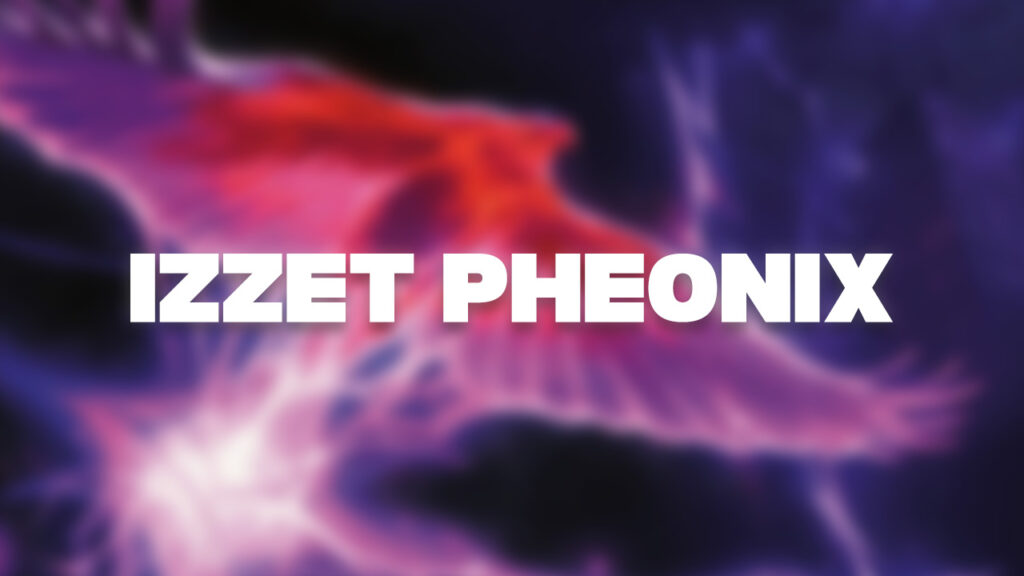
Izzet Phoenix is a strong choice in Pioneer, especially if players aren’t well-equipped with graveyard hate. The goal of this deck is to get copies of Arclight Phoenix into the graveyard while maintaining a high spell count in hand. This allows you to consistently cast three Instants or Sorceries to bring back Arclight Phoenixes, making it difficult for your opponent to keep them off the battlefield with traditional removal.
This deck plays a bunch of cheap removal of its own, such as Fiery Impulse, and cheap cantrips like Consider. This helps guarantee the ability to cast multiple spells in one turn. In addition to Pieces of the Puzzle (since upgraded to Picklock Prankster) which fuels your graveyard and keeps your hand chock full of spells, this deck plays discard outlets like Lightning Axe to pitch Phoenixes that end up in hand.
While Izzet Phoenix dominated the Pioneer format before the release of Wilds of Eldraine, the deck got a whole lot more powerful thanks to the set. Sleight of Hand and Picklock Prankster helped to innovate the deck, bringing it to the next level. Thanks to this, and recent bans, the deck is proving to be a consistent threat in Pioneer. While it can be answered, this deck is a fantastic aggressive choice that’s a proven winner.
Azorius Control
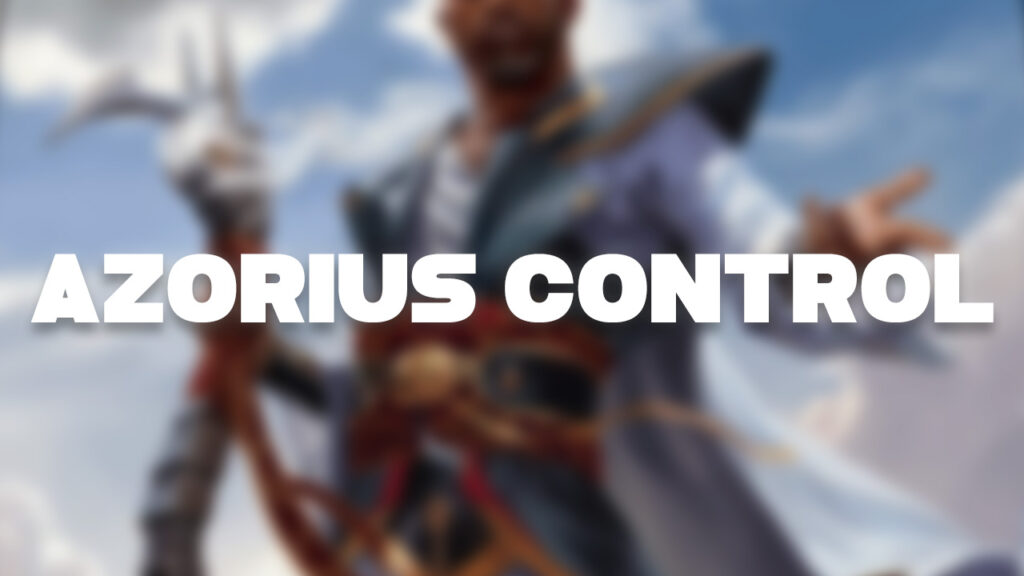
Currently, Azorius Control is the premier control deck in the Pioneer format. Offering a litany of counterspells and a potent removal suite, this deck denies opponents any advantage. Even if an opposing deck gets the ball rolling, Supreme Verdict stops that problem very quickly.
Curiously, Azorious Control decks often don’t run any creatures in the main deck. Instead, Planeswalkers like The Wandering Emperor allow you to slowly chip away at opponents. While 2/2 tokens might not do a lot of damage, that matters not when it’s the only thing in play. Thanks to the sheer amount of removal, keeping the board that way is a surprisingly easy feat.
To really put the hammer down, Teferi, Hero of Dominaria is this deck’s key card. Each one of their abilities is incredibly useful, especially their first which fuels your counterspell shenanigans. Narset, Parter of Veils accomplishes a similar goal while shutting down any opponent trying to draw cards.
Overall, Azorius Control is a very punishing deck that can rather effectively deal with the current metagame. While it does not have perfect matchups with every archetype, it’s nonetheless a potent force that consistently performs well. If you want to play a Control-based MTG deck in Pioneer, this is your best option right now.
Jund Sacrifice
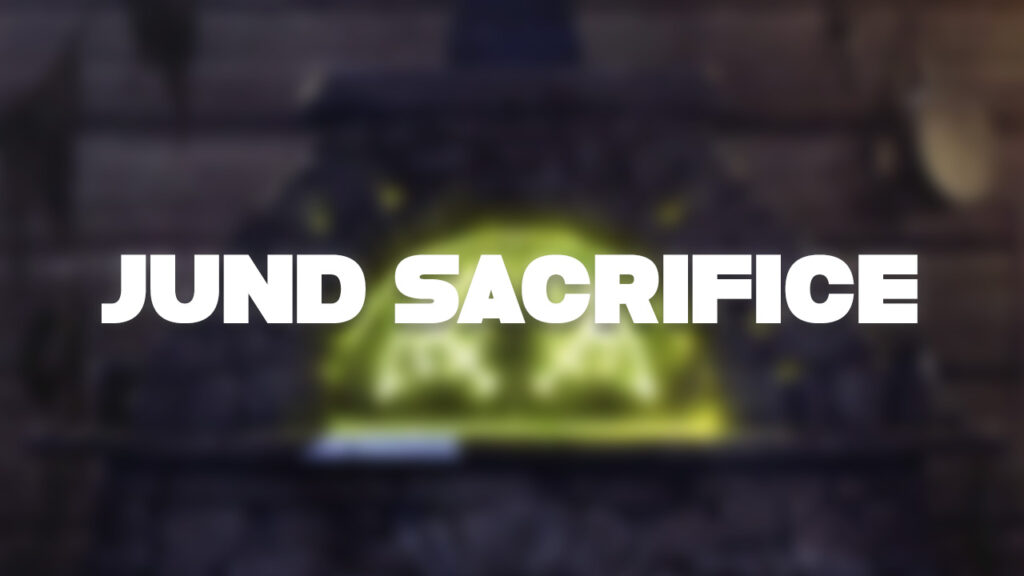
This deck is built around a powerful combination of cards many Magic players find frustrating to play against. Witch’s Oven pairs exceptionally well with Cauldron Familiar. Together, you can sacrifice Familiar to the Oven, which generates a Food token. You can then use that Food token to bring back the Familiar, draining your opponent for one. You can repeat this process every turn cycle. The life drain of Familiar is bad enough for Creature-based aggressive decks to beat, but the fact that Familiar can block every turn, get sacrificed to the Oven before damage, and come right back ready to block again next turn makes connecting in combat on the ground a nightmare.
If that wasn’t bad enough, this combination alongside Mayhem Devil can remove a lot of small creatures or simply cut down the opponent’s life total in short order. It is no secret this deck thrives against most aggressive decks, but the resiliency of the Familiar+Oven combo can be quite effective against Midrange decks with lots of removal too. This deck’s one major weakness is that it does not typically close games quickly.
Like many Pioneer decks, there has been an ebb and flow to the power and popularity of Jund Sacrifice. Currently, the deck is doing rather well for itself thanks to its recent green splash for Ygra, Eater of All. This offers an infinite combo with Cauldron Familiar that was discovered rather early on in Bloomburrow’s spoiler season, giving the deck an inevitability quality.
All in all, Jund Sacrifice is doing very well for itself at the moment and is consistently topping tournaments. Before the bans, Vein Ripper completely deleted this archetype, invaliding all of the synergies it had to offer. Now, the archetype is back in the Pioneer format. As time goes on, there’s a good chance this deck just keeps getting better and better thanks to new sacrifice-focused toys being released.
Dimir Ninjas
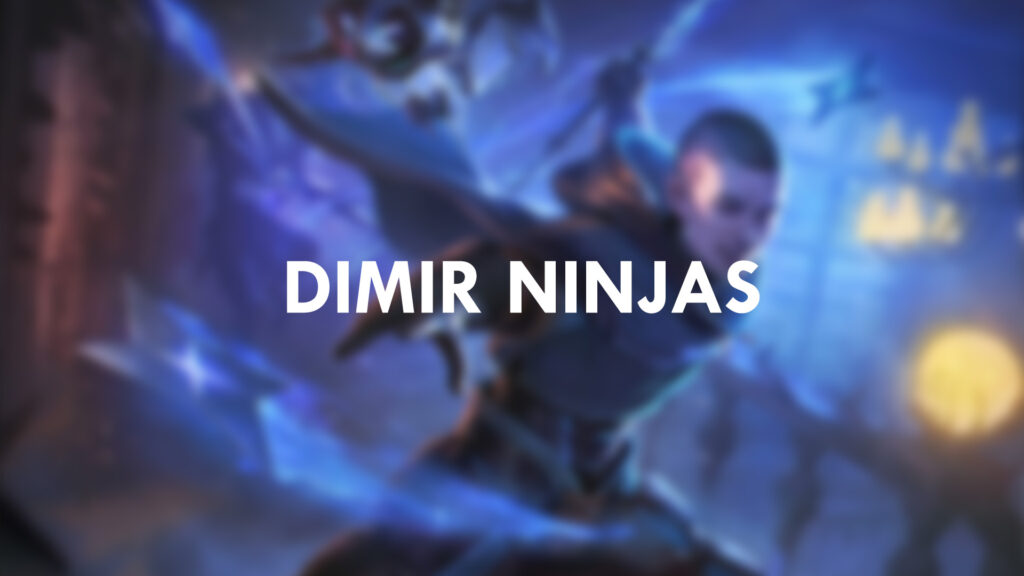
Dimir Ninjas is a tempo strategy that utilizes a lot of unique synergies involving the Ninjutsu mechanic. The deck centers around utilizing multiple copies of Faerie Miscreant to create early evasive threats that can both create card advantage and can grant opportunities to safely Ninjutsu in your larger threats.
Faerie Miscreant may not seem very playable in Pioneer, but Mockingbird from Bloomburrow gives the creature a massive buff. Since Mockingbird can essentially act as copies 5-8 of Faerie Miscreant, it’s very easy to draw cards off of the creature’s effect.
While this synergy helped put Dimir Ninjas on the map, the key card that allows the deck to exist is Kaito, Bane of Nightmares from Duskmourn. The Ninjutsu Planeswalker can fix your draws, buff your Ninjas, and is surprisingly evasive thanks to gaining Hexproof during your turns.
A relentless amount of card advantage coupled with removal, hand disruption, and countermagic makes Dimir Ninjas feel like the tempo decks of old. Fans of the Dimir strategies in the Standard format will likely feel right at home with this deck.
Dimir Ninjas is the type of tempo deck that can win any game of Magic provided you make the right choices. If you enjoy winning by a knife’s edge, this might be the deck for you.
Selesnya Company
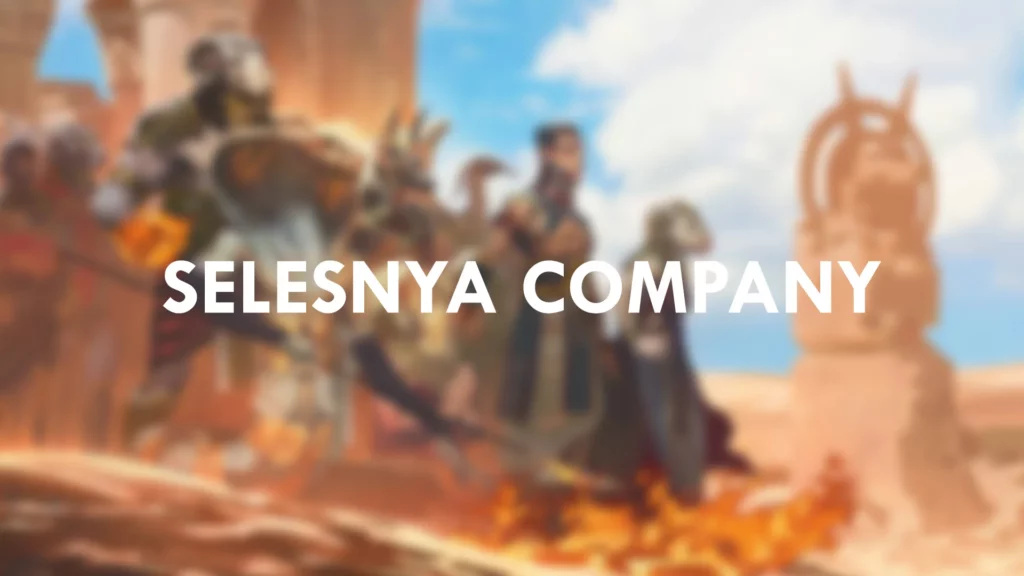
Selesnya Company rose to prominence following its successful showing in an American Regional Championship last year. The deck utilizes a suite of hatebear creatures that are all tied together by the power of Collected Company and Enduring Innocence.
If you’re looking for a deck that can beat up on Prowess strategies, Selesnya Company is a good bet. Archon of Emeria is surprisingly strong against a majority of different archetypes including the Prowess decks. It forces your opponent to play at your speed – a game which you are built to win.
This coupled with Aven Mindcensor creates an incredibly scary combo. The combo can essentially Time Walk your opponent while you build an even bigger board state. A strong draw from Selesnya Company is hard to beat, but if you have a bad Collected Company with this strategy, you can really fall behind.
Tier 1 Pioneer Decks
While there is a lot of variety in Pioneer at the moment, a few decks are undeniably stronger than the rest. Boasting consistent tournament results at every level, these decks are the cream of the crop. Notably, however, one deck isn’t an outright front-runner right now.
Looking at recent tournament results, each of the following decks is consistently in the top four or top eight. If you’re looking for a strong deck with the best chance of winning matches, these might just be for you. Here are the best MTG decks in the Pioneer format right now.
Niv-to-Light
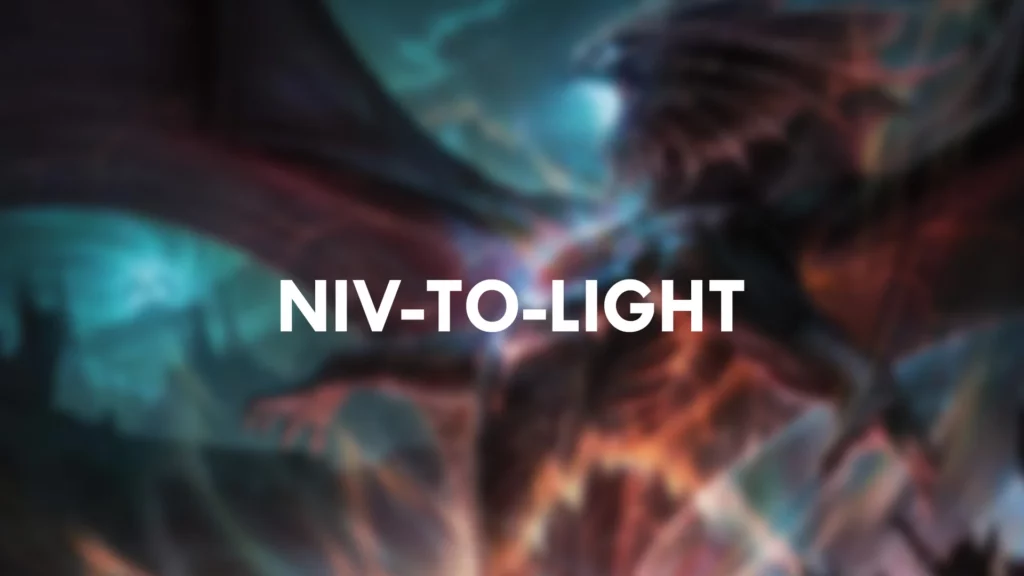
Niv-to-Light’s powerful performance is a reflection of where the metagame went after the ban of Jegantha, the Wellspring. Rakdos Midrange is now the most popular deck in the format by a wide margin, and aggressive decks are still very good. Niv-to-Light is strong against both of these strategies.
This deck leverages Bring to Light to pull ahead of opponents. Resolving the spell is easy for the deck, finding the perfect answer to any situation. As a result, the 80-card Yorion archetype runs a bunch of silver bullets to combat common matchups and situations.
On that note, Yorion, Sky Nomad can create an absurd amount of value in this archetype. Flickering a Niv-Mizzet Reborn is an easy way to refill your hand behind a board presence and pull ahead of the game. Going deeper, there are a few interesting silver bullets that do a lot of work in the current metagame. Notion Thief, in particular, is good at shutting down extra card draw.
The rise of some strange archetypes, like Yorion Bounce, means that bad Niv-Mizzet matchups are more prevalent than they perhaps should be. Of the tier one Pioneer decks at the moment, Niv-Mizzet’s position is likely the shakiest.
Mono Green Devotion
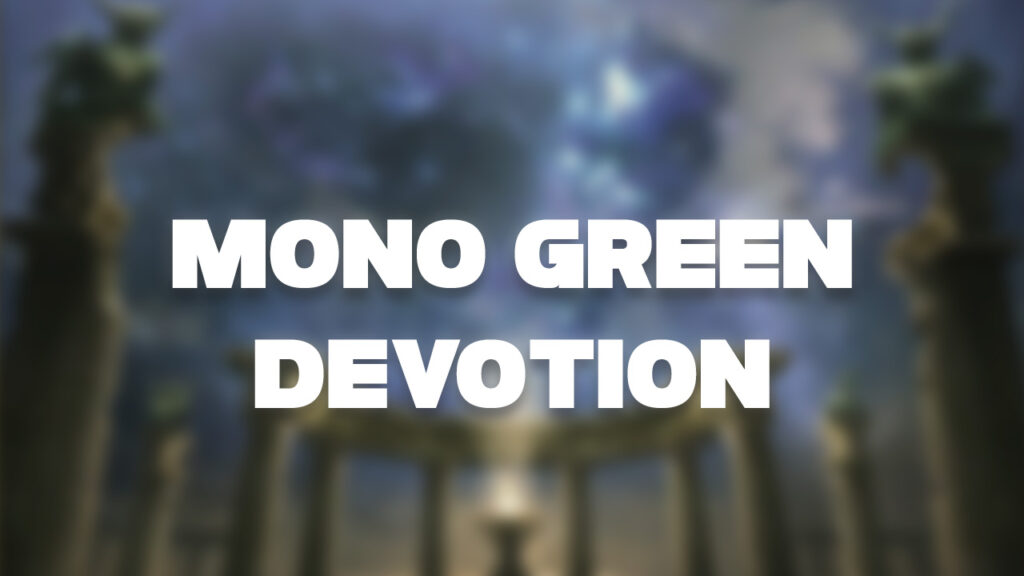
Despite a core piece of the deck being banned in late 2023, Mono-Green Devotion is back in Pioneer. This deck’s power has been reduced now that Karn, the Great Creator is gone, but it’s nonetheless still viable. Unsurprisingly, Nykthos, Shrine to Nyx’s ability to generate a boatload of mana can still do serious work.
At its core, Mono Green Devotion is a rather simple deck that just ramps into threats like Cavalier of Thorns. While this Cavalier is hardly the biggest threat in MTG, it has the advantage of working with Storm the Festival. This helps to give the deck a more reliable tempo that doesn’t peter out after a single massive bomb.
To keep the deck moving, Mono Green Devotion has multiple draw engine and weak tutor effects. Thanks to the power of Cavalier and Ulvenwald Oddity, Outcast Trailblazer and Kiora, Behemoth Beckoner put in real work. If you can get both of these in play, you can consistently churn out threats turn after turn.
While Mono Green Devotion does run Llanowar Elves and Elvish Mystic, Nykthos is obviously the main mana generator. This iconic land works perfectly with Leyline of the Guildpact, provided it’s in your opening hand. Should this be the case, you’ll start games with four green devotion which is a huge early advantage.
Overall, Mono Green Devotion can be a very capable deck once it gets going. Should you be counterspelled into oblivion before then, however, it can struggle. Thankfully, this deck is still capable of fighting for wins against the best Pioneer decks in MTG.
Rakdos Prowess

In a weird twist, Rakdos Prowess is basically a Standard deck with a few powerful pieces added for good measure. Rather than going down the Gruul route, this Pioneer deck splashes black for added removal and redundancy. Despite this slight change, both decks are ruthlessly efficient aggro decks that can easily devastate opponents.
Much like its standard counterpart, this deck’s gameplay revolves largely around Heartfire Hero and or Slickshot Show-Off. Both these cards excel when buffed, allowing them to dish out serious early damage. As if this wasn’t enough already the Burn Together Adventure allows you to fling the buffed at your opponent.
Notably, Rakdos Prowess lists aren’t currently running Leyline of Resonance which is proving powerful in Standard lists. Instead, this deck has slightly more utility and removal in order to ensure it can hold up in Pioneer. A few copies of Fatal Push and a sideboard playset of Thoughtseize are great additions for this purpose.
Returning to the damage-dealing antics, this Pioneer deck also gets to run Titan’s Strength and Monastery Swiftspear. As staple buffs and threats, these cards ensure you should always be able to hit the ground running. If you fail at that, Claim/Fame can reanimate one of your creatures in a pinch.
Ultimately, while Rakdos Prowess is proving to be incredibly powerful, it’s not ineffable. Turn three kills are hardly unbeatable with all the interaction going around, after all. Sadly, this deck especially struggles against Izzet Phoenix, which is a problem as it’s incredibly popular right now. Despite this, the deck can certainly still perform in the right hands and setting.
Gruul Prowess
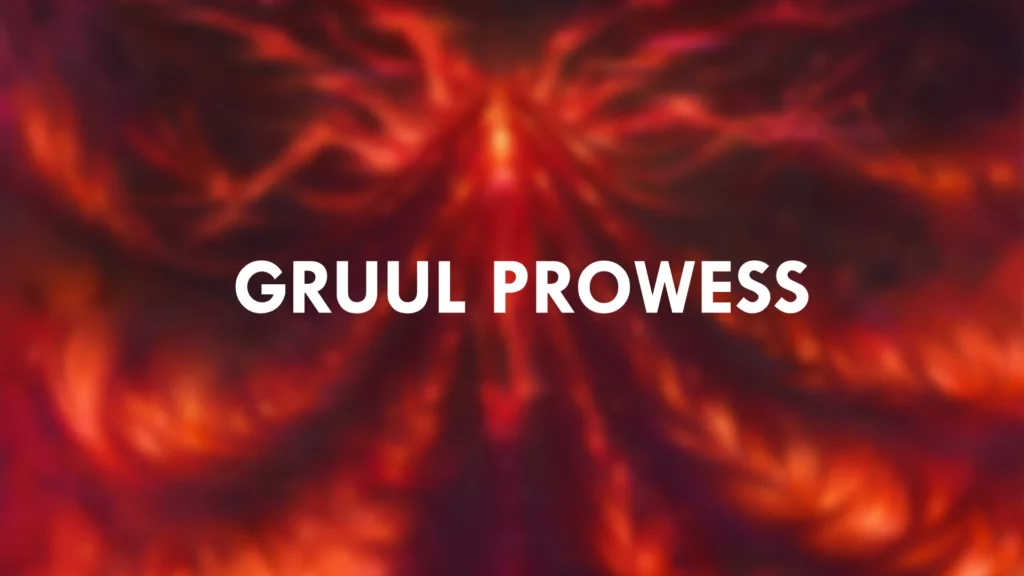
Gruul Prowess is basically another variant of Rakdos Prowess that splashes green cards instead of black ones. While Rakdos Prowess offers more explosive damage, Gruul Prowess offers a better suite of protection spells and options that, while not providing quite as much instant value, continually scale your creatures as the game continues. Innkeeper’s Talent is the perfect example of this.
Gruul and Rakdos Prowess have a slightly different matchup spread. Depending on your goals, one deck may be better than the other. That said, both decks rely on Bloomburrow’s aggressive Mouse package to crush the opponent before they can get their gameplans online.
Rakdos Demons
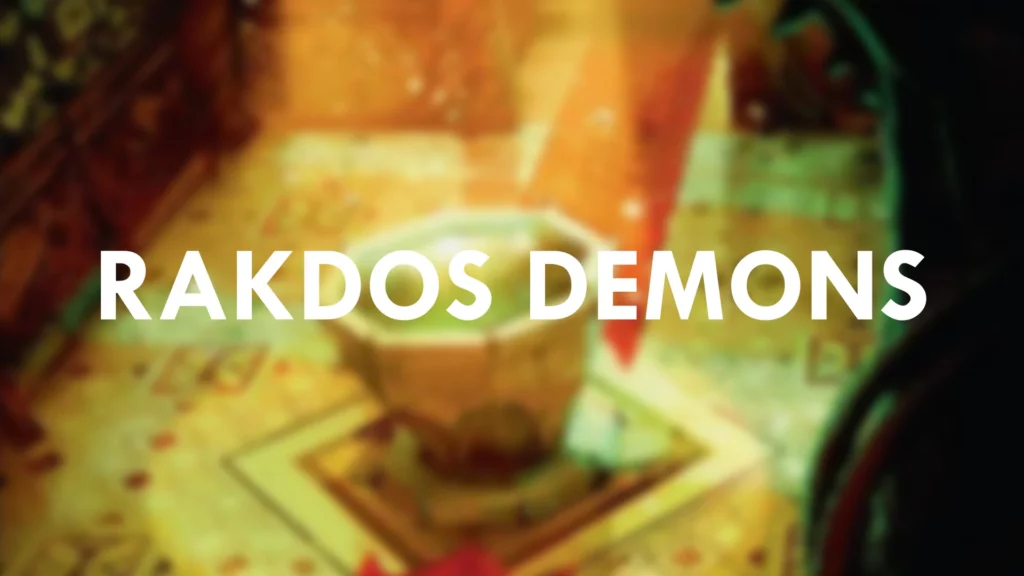
Jegantha’s recent ban was everything that Rakdos Demons hoped for. This gives aggressive strategies a lot less staying power against midrange strategies. Now, Rakdos Demons is, by far, the best deck in Pioneer.
Previously Rakdos Midrange, the new Demon namesake comes from Demon synergies encouraged by Duskmourn. Unholy Annex is an absolutely incredible draw engine, and Rakdos has adjusted to building the archetype around it. As a result, you can now find cards like Blade of the Oni in traditional Rakdos Midrange shells to take advantage of Unholy Annex’s draining ability.
Otherwise, Rakdos Demons also uses Fear of Missing Out as a threat that both shapes your hand and attacks for massive damage with Delirium active. Ultimately, the removal of Jegantha from Pioneer has catapulted this deck to the top of the rankings.
Read More: MTG Best Modern Decks

